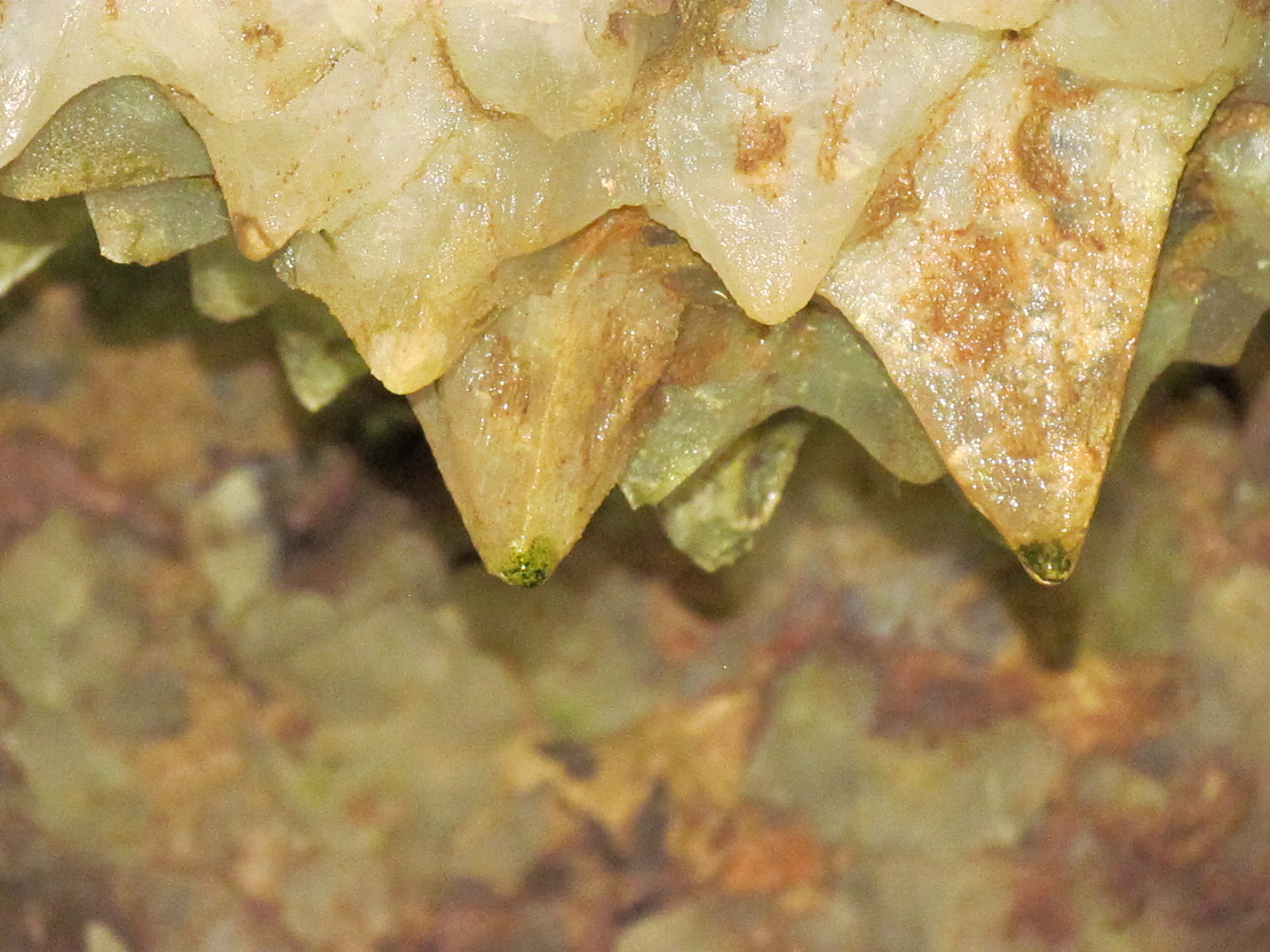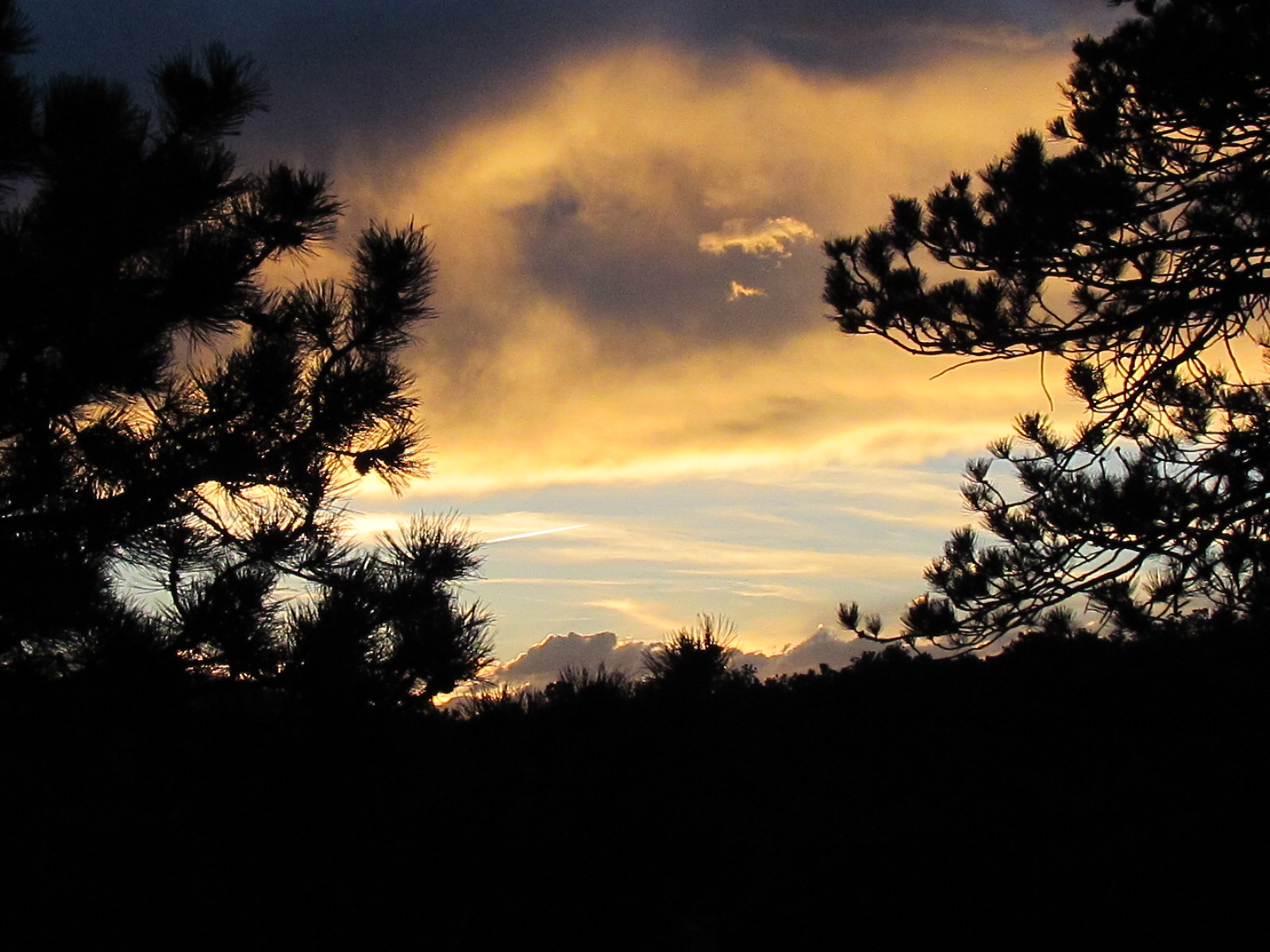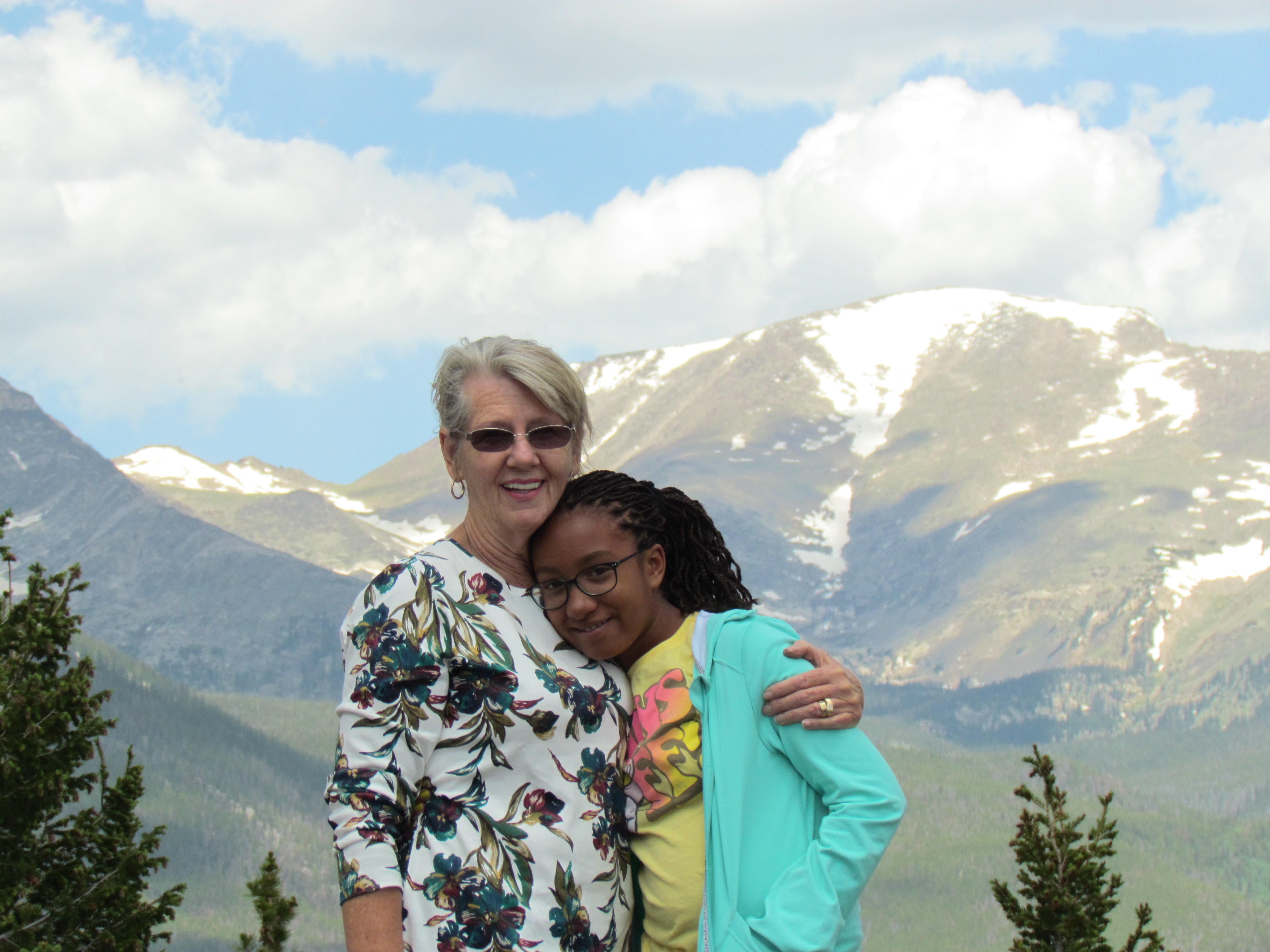We leave Greenbrier State Park just as the surrounding local corn fields reach the shimmer stage. The rowed stocks are knee high and a vigorous youthful green that bows and waves a reflective silver sheen in response to the ever-changing directional afternoon breezes. It is pleasurable to watch as we head the mothership out on the interstate. Our direction is north.
Mia has joined us for our last two weeks in Maryland and first two weeks in Maine.
Our first stop before Maine is a visit to New York City. I was surprised how suddenly the skyline just jumped into view as we drove down the surrounding New Jersey hills. It was a clear day without the haze that usually surrounds such a mega-metropolis.
We locate our campground and hurry off to visit Ellis Island and the Statue of Liberty. It was late in the afternoon but we believed we had enough time to catch the ferries. Unfortunately we missed the last ferry to the Statue so we spent our time exploring the historical displays on Ellis Island.
New York is a walking town! We plot our next full day’s journey before by planning where and how to catch the Path trains and the subway. We also have tickets for a Broadway production of “Wicked.”
After a standing room only jaunt on the Path Train, we arrive at the 911 Memorial. It was like a sunken Vietnam Memorial with water! I did OK looking at the Survivor Tree at Ground Zero and all the mangled twin tower steel girders, but nearly lost it when I viewed the story about the fallen Fire rescue dog. Suddenly all the sadness about that day swept in again. I guess that is what Memorials are supposed to do; make you remember! I wipe my eyes.
After a subway ride up town, we stop in Macy’s. Mia was like a child possessed seeking out the junior’s floor. This was the Macy story I heard about it all through my youth on all the movies and television shows. I was taken back how the smells of the street mingled with the perfume sampling at the front door. It was also cool riding on the ancient wooded escalators. Their jostling and creaking made my back crack.
Leaving the store, we headed towards the Empire State building. We were hawked on the street from a young enterprising man who swore he could save us money and time at the skyscraper by buying a ticket from him. He was charming but we saw the value and believed him. We bought our tickets and he escorted us to the Empire State building express way.
Before getting on the elevator, we sat through a New York experience of a filmed sky walk narrated by Kevin Bacon. It was like a roller coaster ride in the dark but at a movie, and the highlight was the view from the 86th floor. It was great to look over the Hudson River, see the sea of yellow cabs inching through the crowded avenues and the small skyscraper neighbors with their individualistic domes and construction. I swear I saw Snoopy parachuting down from the top of the Met Life building!
Walking in New York is also an experience. You cannot walk in a straight line. It is more or a bob and weave and watch out on the corners where two directions of human beings intersect! There are a billion cigarette butts laying in the gutters and the water that lies stagnant in the cracks and gullies of the street look like they had the same bacterial count as a Kimono Dragon’s mouth. Sometimes the smell of exhaust is over-powered by a sewer vent. We hurry past those.
After a full day, we slide into our seats at the Broadway Play of “Wicked.” It housed nearly two thousand attendees but it was very comfortable and the view of the stage was perfect. Wow, what a performance! I suddenly realized that the New York experience was not walking the avenues or riding on crowded trains & subways, it was what went on behind the billions of doors in the city. That play drove it home that the experience was finding those doors. I am glad we opened that door on Broadway.
It is easy to get into New York. It is not so easy to escape the city in an RV. Our GPS route sent us to the Lincoln Tunnel. The NYC policeman was very polite when he informed us that RV and the propane tank it carries are not allowed in the tunnel. RV’s are only allowed on the bridges.
That set in motion a series of escalating driving stress. When we got to the George Washington bridge, the attendant informed us that the toll was $68 dollars. I wish I had a video of my face when I realized she was serious. Scrambling to come up with that amount of cash so soon after experiencing a night of dinner, Broadway and trains was a miracle.
Just when we thought we had made our escape, we were ushered onto a thoroughfare that suddenly announced that no trucks were allowed on it because of low bridges. For the next forty miles there was no exit except into the boroughs and with increasing frequency, the stone domed bridges became lower and lower. Every time we went under one, Jude & I both ducked. At any second, I expected we were going to deposit our air conditioning unit on the highway. It was the most harrowing driving experience since becoming a nomad!
Lucky we saw a “To I-95” sign and we escaped. We relaxed and took our time driving through Connecticut, Rhode Island, Massachusetts, New Hampshire and then finally crossed into Maine. We entered it like MacArthur coming ashore in the Philippines; confident but getting wet!
The skies opened up and we traveled the whole state in the grips of outer rain bands of Tropical Storm Arthur. We arrived in Trenton at a RV park just as the rain broke. We were to meet our State of Maine contact in the morning. She was going to escort us to the location of our Maine summer residence. Her name is Sunshine; I wonder silently “is that a child of the 60’s” or what?
Outside of Ellsworth about six miles is Happy Town Road that accesses Boat Launch Road. At the end of that gravel road, we drive past a newly constructed boat ramp and into our summer campsite. The ramp is neighbor to a State of Maine day area located on shores of Branch Lake. This will be our charge for July and August. Excited, we explore our surroundings.
Branch Lake is nestled away in a dark leafy canopy whose undercover is punctuated by massive moss-covered Granite boulders left by ancient glaciers. The lake is fairly large and open. Its water is crystal clear. Out on the lake, I hear a loon announcing our arrival! Oh my God is there anything more beautiful?
The Day area is a beach about 200 yards long. It is a conifer-lined beach, filled with ground granite sand and dispersed with a total of six picnic tables and a near-by vault toilet. Our duties are litter patrol, clean the toilet, and light mowing. We are also to be an informative agent for people who come to the beach not to drink alcohol and smoke cigarettes and take their trash with them. Wow! I have a feeling we will meet people who are proud of Maine and maybe some who are definitely not.
Suddenly our phones buzz with an ominous weather warning! Hurricane Arthur was demoted to a Super Tropical depression but it still packed winds in excess of 40 m.p.h., and torrential rain was forecast to have a direct hit on the Down East Maine area!
The rain was non-stop during the night. The surrounding forest protected our home from the gale force winds but the families who lived in their summer homes awoke to their dock and boats in disarray due to gale force driven waves that pounded the western shore of the lake! We help people look for lost kayaks, paddles and small dinghies. Most are found and returned safely to their homes.
Down East Maine is a mixture of forest, blueberry fields, and seafarer camps. In nearly every residence there are gabled windows, snow plows, and huge stacks of fire wood. It is not hard to spot hundreds of lobster and crab pots stacked in many residents’ yards. We make plans to indulge in those feasts of lobster, crab and a new crop of Maine blueberries. YUM!
Ellsworth is a resort community. It lies south between Bangor and Bar Harbor and Mount Desert Island in Acadia National Park on the Maine Coast. It is in the throngs of summer visitation and the highways in and out of the spread-out city are many times choked with congested travelers. We quickly located the best ice cream shop in town.








 It was really grand to see the carved faces with their brilliant white granite looking straight at us.
It was really grand to see the carved faces with their brilliant white granite looking straight at us.  It was quite the feat to take photos as the vibration and plexus-glass of the helicopter made long efforts to get a perfect focus near impossible. I relied on pulling the trigger the instant the landscape came into focus It worked as I got some incredible shots of the monuments and surrounding area.
It was quite the feat to take photos as the vibration and plexus-glass of the helicopter made long efforts to get a perfect focus near impossible. I relied on pulling the trigger the instant the landscape came into focus It worked as I got some incredible shots of the monuments and surrounding area. All around was this royal blue hue that gave the chapel an elegance that I have never experienced from any other chapel, church or any other place of worship I have visited. It was definitely the highlight of our visit to the Air Force Academy campus.
All around was this royal blue hue that gave the chapel an elegance that I have never experienced from any other chapel, church or any other place of worship I have visited. It was definitely the highlight of our visit to the Air Force Academy campus.

 We see them hunting the ponds for Trout, Bass, Crappie, and Carp! They dive feet first and make a huge explosion on top of the water trying to grab their intended prey. I have always wanted to capture the moment on camera as they dive in the water from high but talk about timing. One might wait years to get on such moment let alone have one in focus.
We see them hunting the ponds for Trout, Bass, Crappie, and Carp! They dive feet first and make a huge explosion on top of the water trying to grab their intended prey. I have always wanted to capture the moment on camera as they dive in the water from high but talk about timing. One might wait years to get on such moment let alone have one in focus.
 Since they were accustomed to campers, they were very willing to pose. I have included a few photos of their posing.
Since they were accustomed to campers, they were very willing to pose. I have included a few photos of their posing. It was spectacular driving through the canyons up past the tree line. It reminded me of the many times I wandered above the trees in my Wyoming home. Maybe that’s why Forget-Me-Nots grow there.
It was spectacular driving through the canyons up past the tree line. It reminded me of the many times I wandered above the trees in my Wyoming home. Maybe that’s why Forget-Me-Nots grow there.